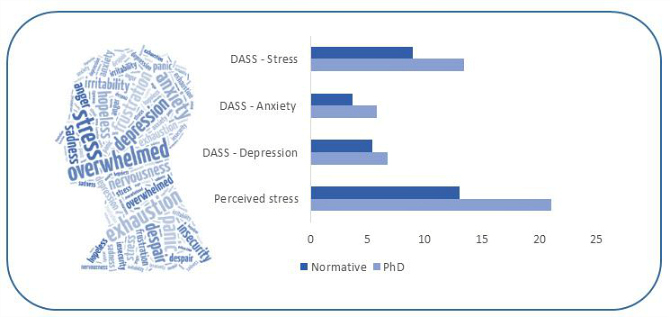 While it is no longer uncommon for social scientists to be included in research groups tackling complex problems in the natural sciences, limited understanding of the different disciplinary areas within the social sciences remains a challenge. Eric Toman describes the approach social science faculties at his university have taken to address this and also outlines how graduate training programmes have been reshaped to balance interdisciplinary breadth with disciplinary depth, allowing students to develop a particular area of expertise while also providing first-hand experiences to help them function effectively within interdisciplinary teams.
While it is no longer uncommon for social scientists to be included in research groups tackling complex problems in the natural sciences, limited understanding of the different disciplinary areas within the social sciences remains a challenge. Eric Toman describes the approach social science faculties at his university have taken to address this and also outlines how graduate training programmes have been reshaped to balance interdisciplinary breadth with disciplinary depth, allowing students to develop a particular area of expertise while also providing first-hand experiences to help them function effectively within interdisciplinary teams.
What does it mean to include a ‘social scientist’ in a team tackling complex problems? Here, I focus on complex environmental problems and how biophysical and social scientists work together. I’m curious if social scientists face the same issues in other problem areas, such as health.
Things have improved since my early academic career, when I was often asked to justify why a social scientist deserved a seat at the table when discussing environmental questions. It seemed that even supportive natural scientists were motivated to engage their social science colleagues only to ‘fix’ some type of problem caused by people (e.g. politicians, decision-makers, managers, the ‘general public’).
While it’s now normal for social scientists to be included, they tend to be lumped together, unlike the biophysical scientists who are differentiated into a range of disciplines with relevant specialization areas. There seems to be limited understanding of the different disciplinary areas within the social sciences, each with its own body of knowledge and historical tradition.
 Image credit: Tapestry by Matthias Rosenkranz. This work is licensed under a CC BY-SA 2.0 license.
Image credit: Tapestry by Matthias Rosenkranz. This work is licensed under a CC BY-SA 2.0 license.
In the School of Environment and Natural Resources where I work, the number of social scientists has increased in recent years for a variety of reasons (some strategic, others based on changes elsewhere in the university). As the social scientists increased in number and diversity, we found it was important to help our natural science colleagues better differentiate among the social science faculty to facilitate recognition of the knowledge areas and skills we represent. One key goal was increasing clarity about who among the social science faculty could best contribute to addressing particular research questions.
After quite a bit of discussion, we elected to organize around typical social science units of analysis—individuals (cognitive and social psychologists), communities (sociologists), and institutions (political scientists). Even though the distinctions are imperfect — as many of us address questions at more than one level; e.g. using a sociological lens to examine issues related to institutions — the process has proven useful to enrich our identity as a diverse group of scientists.
Specifically, it has helped us move away from an assumption common among our colleagues in the biophysical sciences that our skills are fully overlapping, so that only one social scientist — and it didn’t really matter which one — would be viewed as necessary for any given project. Yes, we all study humans in some form or other, but we do so drawing on a diverse range of theoretical approaches and can make different types of contributions when considering wicked environmental problems.
This has also provided opportunities for social scientists to contribute at an earlier stage to discussions about potential research ideas with our natural science colleagues. While we’re all still learning how to navigate this process successfully, engaging earlier has helped shift the social science component from being viewed as an add-on to projects primarily focused on biophysical questions and has allowed us to collectively develop integrated research questions that represent the expertise of the full research team.
Implications for graduate education
These discussions have also helped our environmental social science group reflect on how to best organize our degree requirements to foster the next generation of environmental social scientists. Similar to many others, we have found ourselves grappling with questions about how to balance interdisciplinary breadth with disciplinary depth in our training. While there are different philosophies about how to approach this question, we have moved towards providing a greater depth of training in a particular disciplinary area.
At the graduate level, our approach has shifted to providing a common set of introductory courses for all environmental social science students and then directing students to select one of our designated tracks that provide theory and methods training in a core disciplinary area (with a focus on individuals, communities, or institutions).
This coursework is complemented by additional school-wide courses that bring together students from all natural and social sciences to consider the philosophy of science and the paradigms used in each of our disciplinary areas. Our intention is that students develop depth in a particular area of expertise while also providing training and first-hand experiences to help them function effectively within interdisciplinary teams.
Fortunately, in my experience the tension regarding the relevance of social science has changed substantially over the past ten-plus years, from one of needing to justify why social scientists deserved a seat at the table regarding environmental questions to the very real challenge of navigating the language, cultural, and epistemic differences that may exist between different scientific disciplines.
I have described one department’s approach to navigating the complex issues associated with interdisciplinary research and training. What approaches have you used within your institutions and what successes and challenges have you encountered? How are you approaching the question of disciplinary depth and interdisciplinary breadth in your own career and in graduate education? I look forward to hearing your thoughts and learning from your experiences.
This post originally appeared on the Integration and Implementation Insights blog and is reposted with permission.
Note: This article gives the views of the author, and not the position of the LSE Impact Blog, nor of the London School of Economics. Please review our comments policy if you have any concerns on posting a comment below.
About the author
Eric Toman is an Associate Professor and Chair of the Graduate Studies Committee in the School of Environment and Natural Resources in The Ohio State University’s College of Food, Agricultural, and Environmental Sciences. He has an interdisciplinary background with training and experience in the social and natural sciences. Using theory and methods from sociology and social-psychology, he examines the factors that influence the adoption of behaviors that enable adaptation to changing environmental conditions. His current research focuses on wildfire, endangered species, agriculture and water quality. He previously completed an American Association for the Advancement of Science, Science and Technology Policy Fellowship in the Climate Program Office of the U.S. National Oceanic and Atmospheric Administration. He is a member of the Translational Ecology Pursuit funded by the US National Socio-Environmental Synthesis Center (SESYNC).








1 Comments